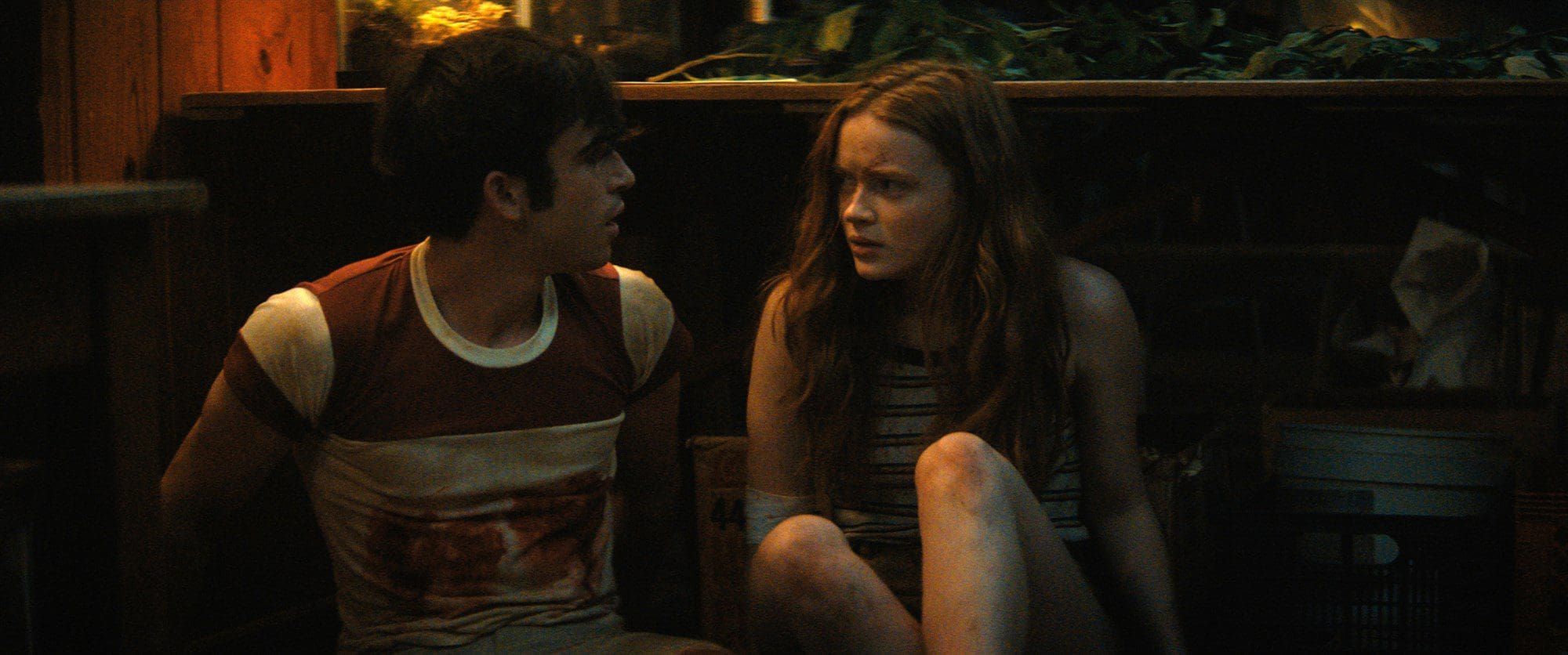
Written by Sam Niles
The witch’s curse in Fear Street Part 1: 1994 was a simple stroke of genius. In my review, I praised the film for bringing in multiple killers from the anthology book series without relying on the “evil book brings evil fiction to life” trope, seen in similar adaptations such as Goosebumps. The effectiveness of this simple miracle is enhanced in Fear Street Part 2: 1978, which strengthens the series’ overarching identity by distinguishing itself in simple but significant ways.
However, the film doesn’t distinguish itself too drastically (nor should it). It’s still a slasher with a supernatural twist and both films have essentially the same structure. They start with one killer who can be explained by the natural world. But soon after the “natural” killer survives the unsurvivable, killers from previous decades come back to life, and the supernatural becomes undeniable.
But while both films follow this recipe, director and co-writer Leigh Janiak (sharing a script credit with Zak Olkewicz) mess around with the proportions. 1994 emphasized the smorgasbord of different killers, embracing their different looks from different eras to highlight the unreality of the situation, and just how long this supernatural curse has been with the town. 1978, on the other hand, spends a longer time with its first killer, making for a greater emphasis on the era and allowing the sequel to stand on its own two feet. The campground setting and look of the killer, an axe-wielding, sack-wearing camp counselor named Tommy (McCabe Slye), are not subtle references to the Friday The 13th series, but they make for a fun love letter. Janiak isn’t interested in merely copying and pasting elements from better films, but instead asks “what did I love about those films, and what else can I do with them?”
The main characters are two sisters, camper Ziggy (Sadie Sink) and counselor Cindy (Emily Rudd). Being both an older sister and a counselor, Cindy’s insecurities are compounded. She’s supposed to be a role model for both Ziggy and the other campers, but her “destiny” to be stuck in Shadyside haunts her. Attempting to deny this destiny, she turns her back on her friends, her sister and herself. She’s no longer a potty mouth, relatively uptight, desperately trying to get into college and has worked an obscene amount so she could afford her one nice polo shirt—which she wears all the time.
It isn’t elitism that drives Cindy, it’s survival. But this isn’t how her sister Ziggy sees it: she sees it as betrayal. There’s certainly annoyance on Ziggy’s part (who likes their older sibling lecturing them?), but there’s mostly heartbreak, a sense of loss for the old Cindy.
Ziggy, you see, is totally resigned to their fate as Shadysiders. She believes in the curse, and knows it means nothing good for her life, and she wants her sister to understand this too. This isn’t out of malice, but the kind of love that makes you hug your family in the face of an asteroid.
And yet, for all this certainty, for all the emphasis on the inescapable fate of Shadysiders, I have no idea how the trilogy will end next week. Our heroes have overcome insurmountable obstacles, with their moments of triumph cut short by some unpredictable threat. Fear Street Part 2: 1978 ends with a cliffhanger that shatters the rules we thought we knew, leaving us and the characters in a state of horrified confoundment.
What awaits us in 1666, and what will it all mean in the end?
I don’t know, and I can’t wait to find out.

